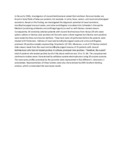Leishmania donovani parasites in the nasal secretions, tonsillopharyngeal mucosa, and urine centrifugates of visceral leishmaniasis patients in Kenya.

View/
Date
1993Author
Mebrahtu, YB
Hendricks, LD
Oster, CN
Lawyer, PG
Perkins, PV
Pamba, H
Koech, D
Roberts, CR
Language
enMetadata
Show full item recordAbstract
In the early 1930s, investigators of visceral leishmaniasis stated that Leishman-Donovan bodies are found in body fluids of kala-azar patients, for example, in urine, feces, semen, and nasal and pharyngeal secretions. Based on this finding, we investigated the diagnostic potential of nasal secretions, tonsillopharyngeal mucosal swabs, and urine centrifugates inoculated into Schneider's Drosophila Medium (containing antibiotics and antifungal agents) as well as with Giemsa-stained smears. Consequently, 64 randomly selected patients with visceral leishmaniasis from Kenya (59 who were splenic culture or Giemsa stain positive and five who were culture negative but Giemsa stain positive) were tested by three noninvasive methods. These tests were all performed before the patients were treated with Pentostam. Cultures of nasal and tonsillopharyngeal swabs and urine centrifugates produced 28 positive samples representing 24 patients (37.5%). Moreover, a set of 25 Giemsa-stained slide smears made from the nasal and tonsillopharyngeal mucosa of 25 patients with visceral leishmaniasis who had not tested positive in cultures produced nine positives. Therefore, the overall total of patients who tested positive by all of the above methods was 33 or 51.6%. The cryopreserved Leishmania isolates were characterized by cellulose acetate electrophoresis using 20 enzyme systems. The isoenzyme profiles produced by the parasites were represented in five different L. donovani s.l. zymodemes. Representatives of these isolates were also characterized by DNA Southern blotting analysis, which corroborated the isoenzyme results
Citation
The American Journal of Tropical Medicine and Hygiene [1993, 48(4):530-535]Publisher
University of Nairobi
Collections
- Faculty of Health Sciences (FHS) [10415]
